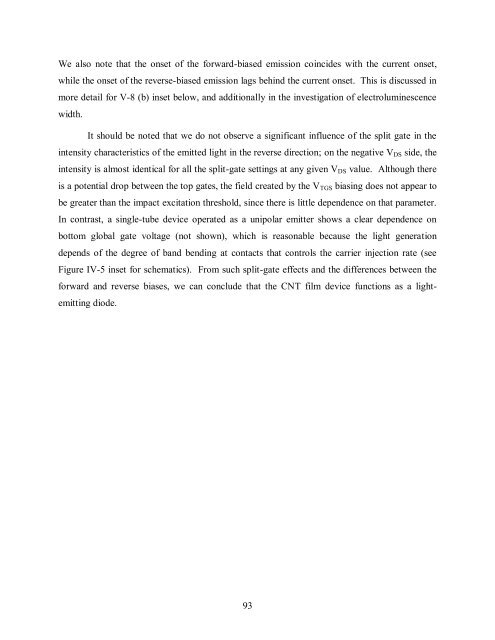Optoelectronics with Carbon Nanotubes
Optoelectronics with Carbon Nanotubes
Optoelectronics with Carbon Nanotubes
You also want an ePaper? Increase the reach of your titles
YUMPU automatically turns print PDFs into web optimized ePapers that Google loves.
We also note that the onset of the forward-biased emission coincides <strong>with</strong> the current onset,<br />
while the onset of the reverse-biased emission lags behind the current onset. This is discussed in<br />
more detail for V-8 (b) inset below, and additionally in the investigation of electroluminescence<br />
width.<br />
It should be noted that we do not observe a significant influence of the split gate in the<br />
intensity characteristics of the emitted light in the reverse direction; on the negative VDS side, the<br />
intensity is almost identical for all the split-gate settings at any given VDS value. Although there<br />
is a potential drop between the top gates, the field created by the VTGS biasing does not appear to<br />
be greater than the impact excitation threshold, since there is little dependence on that parameter.<br />
In contrast, a single-tube device operated as a unipolar emitter shows a clear dependence on<br />
bottom global gate voltage (not shown), which is reasonable because the light generation<br />
depends of the degree of band bending at contacts that controls the carrier injection rate (see<br />
Figure IV-5 inset for schematics). From such split-gate effects and the differences between the<br />
forward and reverse biases, we can conclude that the CNT film device functions as a light-<br />
emitting diode.<br />
93
















